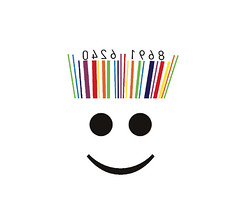 |
| Social Graphic Designer (Photo credit: Filimonas) |
Every freelance graphic designer operates their business differently, but in most cases follows the same general process as below. The information provided herein is based on my own experience as a freelance graphic designer, and can be used to set the basis for your own operations or to give clients a better insight into your typical design process.
Request for Quote
Before a project/job can begin, some form of introduction has to be made between the client and designer. It can go both ways: the designer submitting a project proposal, resume or portfolio for the client’s consideration or vice versa, the client submitting a request for quote, project brief, etc. This can be accomplished in any number of ways but most typically is either through an email, a website form, a phone call or an in-person meeting.
Estimate
If the cost of the project hasn’t been set by the client (i.e. in a job advertisement, project brief, etc.), generally the designer will review the project specifications and supply a reasonable estimate based on: the information submitted by the client during the introductory phase and their own rates and terms of service.
Contracts
An experienced designer knows better than to offer a service without the security of a contract to protect them. Typically the contract will cover all the basis of the designer’s working operations including: costs of services, deadlines, ownership, payment terms and so on. Always read and understand the contract fully before signing!
Deposits / Upfront Payments
Most designers require some form of upfront payment, generally 10-50% of the estimated project cost, and will expect it to be paid before any service is provided. This not only protects the designer in the event the client cancels after work has been provided, but also signals to the designer that the client is serious about following through with the project. In many cases, this initial deposit is retained by the designer (i.e. it won’t be refunded to the client).
Concepts
Once all the paperwork and upfront payments are out of the way, the designer will then get to work by producing “concept ideas” based on the client’s requests. Generally these are sketches, mock-ups or what the designer believes the final design should look like (in rough form). Most designers provide 1-5 initial concept ideas. Providing the client with too many concepts could complicate and drag on the project for longer than initially projected – the client won’t like being billed more than the estimated cost.
Revisions
Generally the client will take a few days to mull over the concepts provided by the designer and choose one or two to modify or revise into what they want the final design to be. Some designers limit the amount of revisions that can be made in order to streamline the project to completion; while others provide unlimited amounts of revisions. If you have a picky client that likes to make change after change; a friendly reminder that they will go over-budget if they proceed to make any more changes and/or that their requested changes will be billed as a “redesign” (therefore needing a new set of contracts and payments) will help them make up their mind quicker, so you can get on with the design process.
Final Design
Once the client is satisfied with the concept idea that they’ve revised, its time for the designer to finalize the design – that is to clean up the artwork, prepare files for output, and compiling all the finished files to send to the client after final payment.
Final Payment
Before the designer releases the final design to the client a final payment is typically due for all the expenses incurred for the project; generally excluding the initial payment. Once all payments have been made, the designer will then send the final design along with any transfer of rights to the client. The client will then go on to use the files in the manner specified by the designer or as arranged for the project. Generally at this point the project is considered finished and the client and designer go their separate ways.
After Project Expenses
For projects where the content is licensed, sometimes the client will have to continue making payments to the designer for use of the design/material well into the future. Other times the client may return to the designer months or years later asking for a revision or change to the design; in most cases the designer will charge their then standard rate/terms for the service regardless of what the original rate was.
Source

2 comments:
Hello! You some kind of expert? Great message. Can you tell me how to follow your blog
Graphic Design Brisbane
Creative Agency Brisbane
Creative Agency Australia
Graphic Design Australia
I like the helpful information you provide. Pay a visit this essay due in 3 hours web page. I'm quite certain I will a lot of of new stuff right here!
Post a Comment